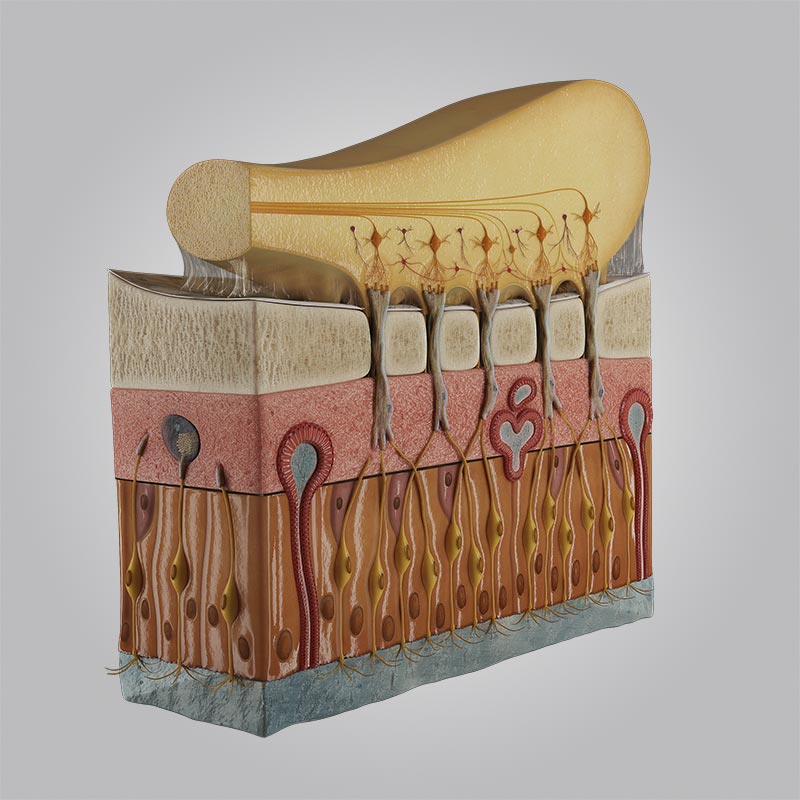
Introducing the new olfactory bulb microanatomy model, coming soon to Complete Anatomy.
Lining the roof of the nasal cavity is the olfactory epithelia, the tissue responsible for detecting odorous particles in the air. This epithelia contains millions of specialized cells that have hair-like projections, called cilia, protruding into the mucous layer. On each of these cilia are receptors which detect the presence of odorous molecules in the air. The receptors and the scent interact in a lock-and-key fashion, with specific receptors detecting particular odors.

Once the receptor and odorous molecule bind, a signal is sent from the cilia up the receptor cell and into the olfactory bulb. The receptor cell synapses with a mitral neuron to pass on the message of the detected smell to the olfactory cortex in the temporal lobe, where it is interpreted and recognized.
This pathway is closely associated with the limbic system, which is involved with emotion. That’s why you might have a pretty strong response to imagining the smell of this … ?… or this … ?… ? Gross!!
And a warm fuzzy feeling when you think about the smell of these… ? ? ?
The olfactory bulb is one of 4 brand new microanatomy models going into our upcoming release. To discover our detailed anatomy models to date in Complete Anatomy, try it for free today.
